2018 Hot List: Players Irons
Creative use of technology and materials has modernised this category without giving up the classic shape better players prefer.
Listed alphabetically Handicapper (L) Low (M) Middle (H) High
Callaway
X Forged
Performance ★★★★★
Innovation ★★★★
Look/sound/feel ★★★★★
Demand ★★★★½
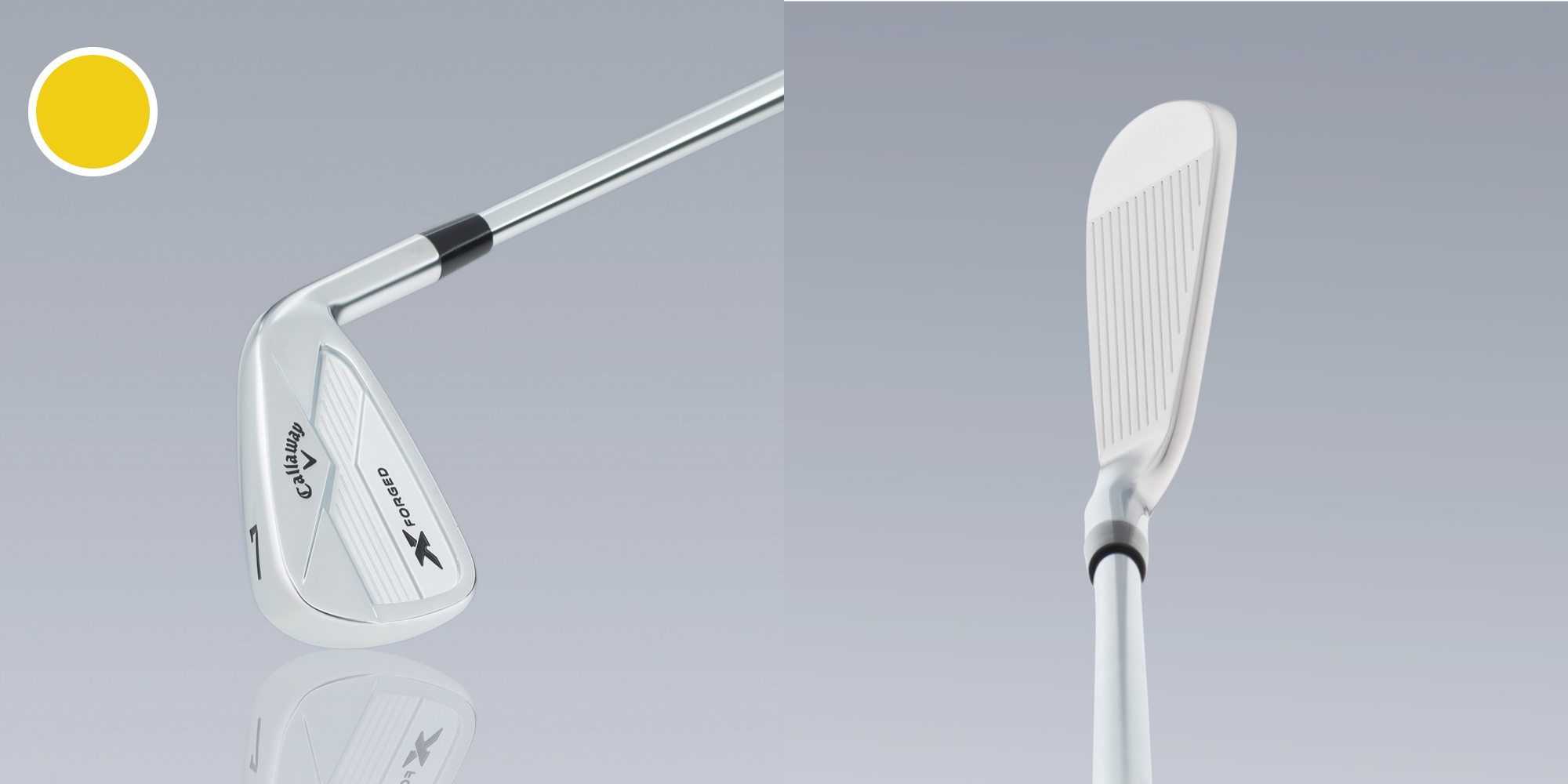
Verdict The adage that there are few new ideas, only new execution, rings true here. Calling it a “reincarnation” of its X Forged from 2013, Callaway brings its newest ideas to the proven form of a five-year-old, single-piece forging. Trajectory (higher in the long irons, more controlled in the short irons) is managed by a weight pad in the back cavity, and a new groove design is intended to reduce fliers and improve spin control on shots out of the rough. The company’s Apex Pro iron was a players iron for wannabes. This one is the real deal.
Comments (L) The feel is much softer than in past years. You get a consistent ball flight that is mid to high. (M) Workable with a balanced feel. It’s super easy to curve the ball.
Mizuno
MP-18 MMC
Performance ★★★★★
Innovation ★★★★★
Look/sound/feel ★★★★½
Demand ★★★★
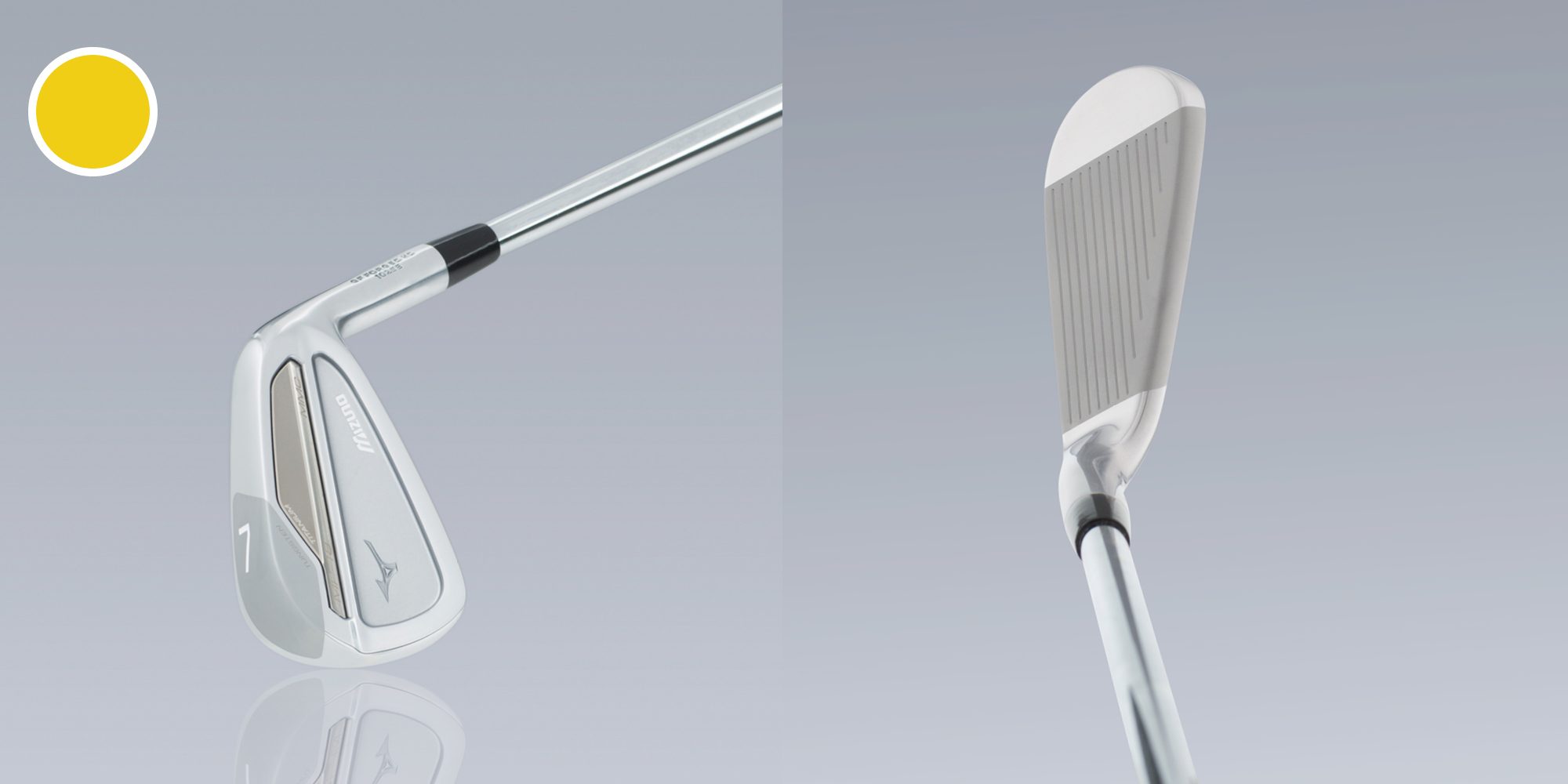
Verdict A three-year project among Mizuno’s R&D team, its exclusive forging house and veteran artisans has resulted in the most technologically sophisticated member of the MP-18 family. Mizuno had titanium forged into the carbon-steel head so weight could be placed where it can better assist forgiveness. Tungsten plugs fit into an internal cavity near the toe, allowing mass to rest deeper as lofts get lower (and soles get wider) to maximise forgiveness.
Comments (L) More workable than a lot of clubs, but you don’t have to worry about overcooking it. (M) There’s a balance to the product in which everything feels like it works together. No suffering in the feel department. The ball seems to melt into the face.
Mizuno
MP-18 SC
Performance ★★★★½
Innovation ★★★★
Look/sound/feel ★★★★★
Demand ★★★½
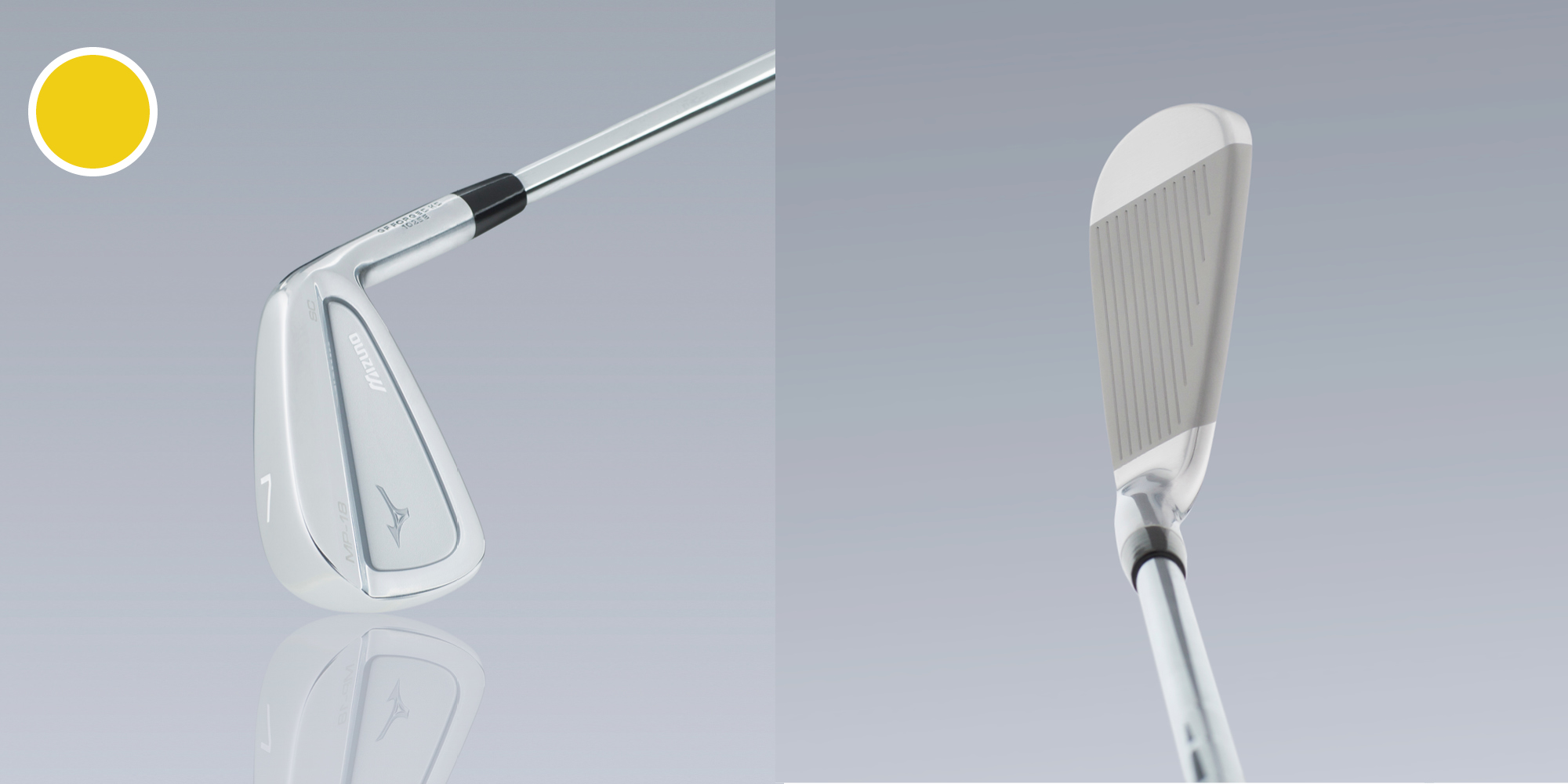
Verdict This is the epitome of a modern iron for better players. A new forging process tightens the grains of the carbon steel lower on the face to enhance feel. The result is a low-muscle-back design with an upper cavity throughout the set that performs and feels like a full muscle-back blade. The sole is slightly wider than a typical muscle-back iron, but the trailing and leading edges are shaped for blade-like performance through the turf. Plus, kudos to Mizuno for staying true to traditional lofts.
Comments (L) The perfect head shape with a clean appearance in the back. Just enough forgiveness, too. (M) The à la carte option on the irons where the different models seamlessly blend together is genius.
Ping
iBlade
Performance ★★★★★
Innovation ★★★★½
Look/sound/feel ★★★★½
Demand ★★★
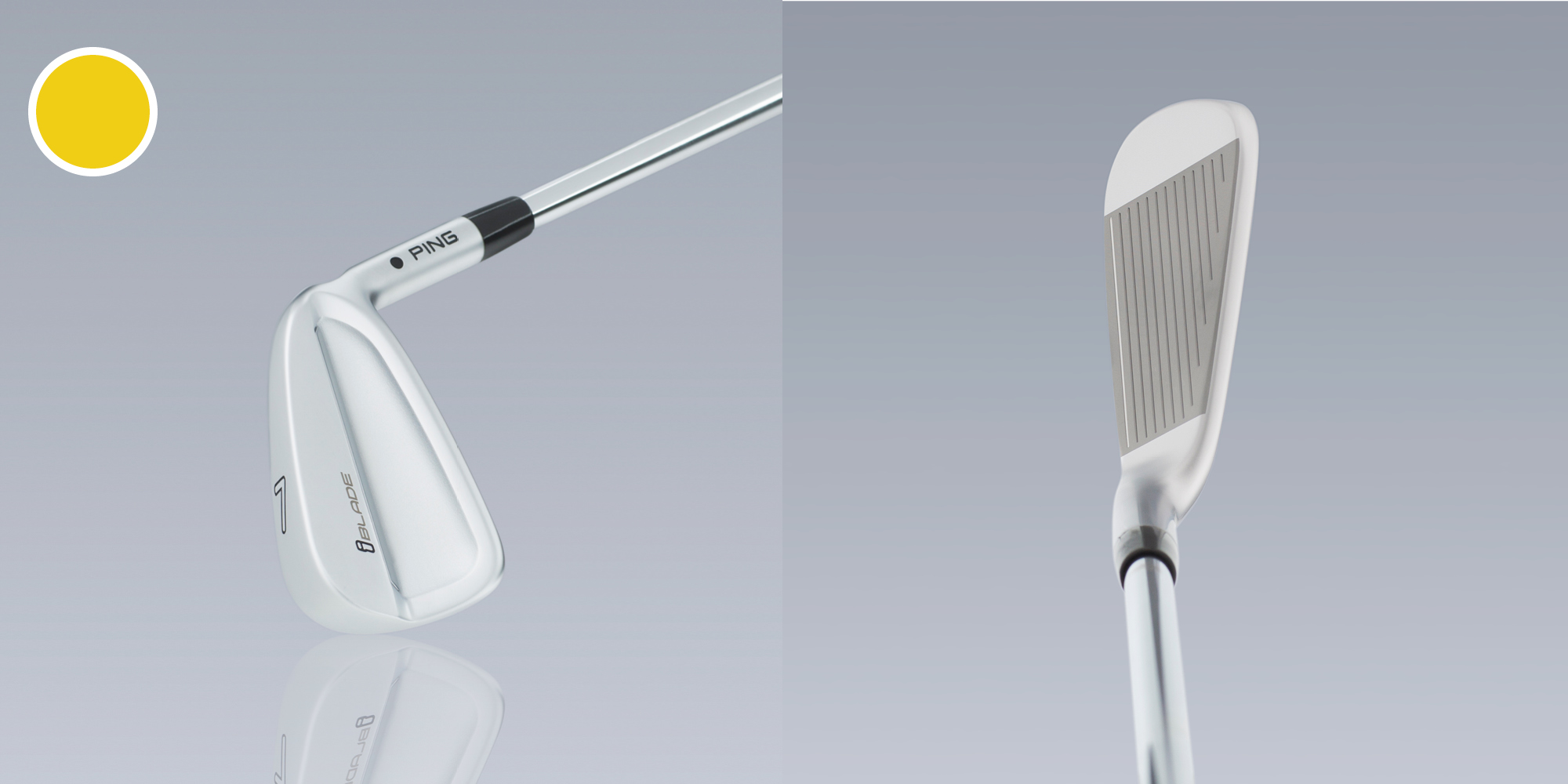
Verdict The super-thin hot face gets your attention, but behind it is something equally as important. As faces get thinner, sound and feel can become compromised, so Ping’s engineers developed a way to support a large area of the face from heel to toe with an elastomer insert. The material allows the face to flex at impact and filter vibrations for a soft feel. Stability also gets a boost from a high-density tungsten block in the low toe.
Comments (L) Gorgeous clubs. The finish makes the topline look more stylish than intimidating. (M) They feel powerful and easy to hit straight. It produces a boring trajectory that doesn’t balloon. It also offers a little bit of help, which inspires confidence.
PXG
0311T
Performance ★★★★
Innovation ★★★★½
Look/sound/feel ★★★★
Demand ★★★½

Verdict The weights in the back look cool and serve a purpose, but the technology in these irons works as much from the inside as out. The hollow, elastomer-filled construction allowed PXG designers to create a thin, high-strength steel face that provides plenty of pop. The back of the forged body features tungsten screws to maximise off-centre-hit stability. You can get the iron in the Xtreme Dark finish for an extra $US100 an iron.
Comments (L) I had no issues getting the ball in the air. The swingweight feels right, and I like the look from head to heel. It really performed. (M) I was impressed by the height of the long irons, and the heads carve through the turf.
TaylorMade
P770
Performance ★★★★½
Innovation ★★★★½
Look/sound/feel ★★★★
Demand ★★★½
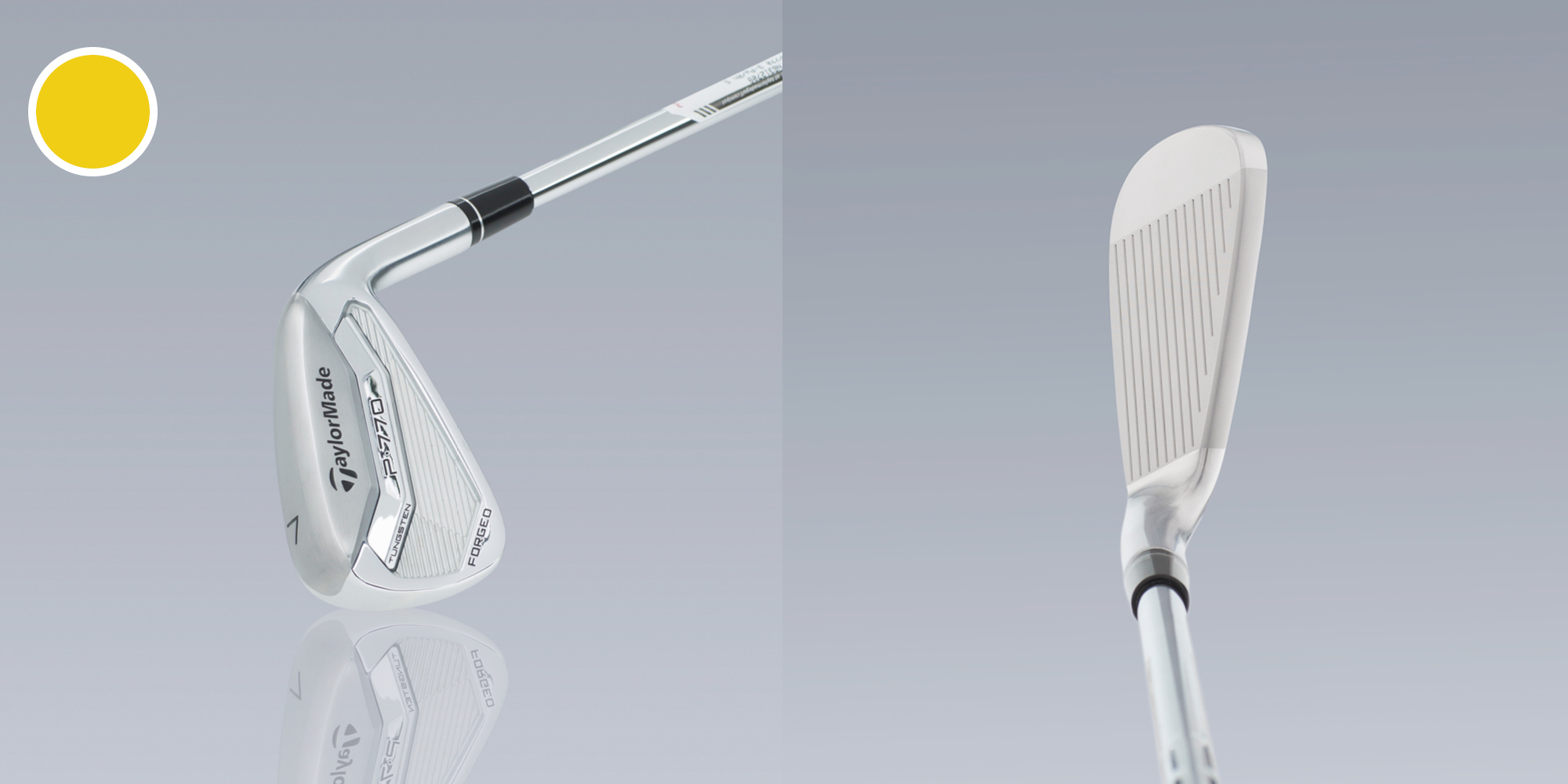
Verdict You don’t have to play for pay to enjoy the benefits of the P770. The carbon-steel forged clubhead features a hefty 70-gram tungsten weight in the back cavity and sole on the two-piece 3 through 7-irons to help get the ball in the air and enhance forgiveness. The 8-iron through pitching wedge are one-piece forged cavity-backs. The face thickness is tapered – thinner in the upper part for a lower centre of gravity and thicker in the bottom for a soft feel and solid sound at impact.
Comments (L) A great iron for the better ball-striker. Fantastic turf interaction. (M) A good introduction for the aspiring player in this category. It had that clean, clicking sound through impact as well.
Titleist
718 AP2
Performance ★★★★★
Innovation ★★★★★
Look/sound/feel ★★★★½
Demand ★★★★★

Verdict When you have a proven performer, there’s no need to change much, but boosting distance and forgiveness doesn’t hurt. A steel body is forged to a face insert made from the same steel. This allows for a thin face that improves long-and middle-iron distance. The set then switches to a 1025 carbon-steel body and face insert for the 7-iron. The 8-iron through pitching wedge use a forged 1025 carbon-steel face and body. Two densities of tungsten in the heel and toe provide stability on the 3 through 7-irons.
Comments (L) Sharp-looking and modern, it offers forgiveness and a flush feel when you hit it square. (M) The ball comes off the face hissing like a cat, and short irons stay at a manageable trajectory.
Titleist
718 CB
Performance ★★★★
Innovation ★★★★½
Look/sound/feel ★★★★½
Demand ★★★½
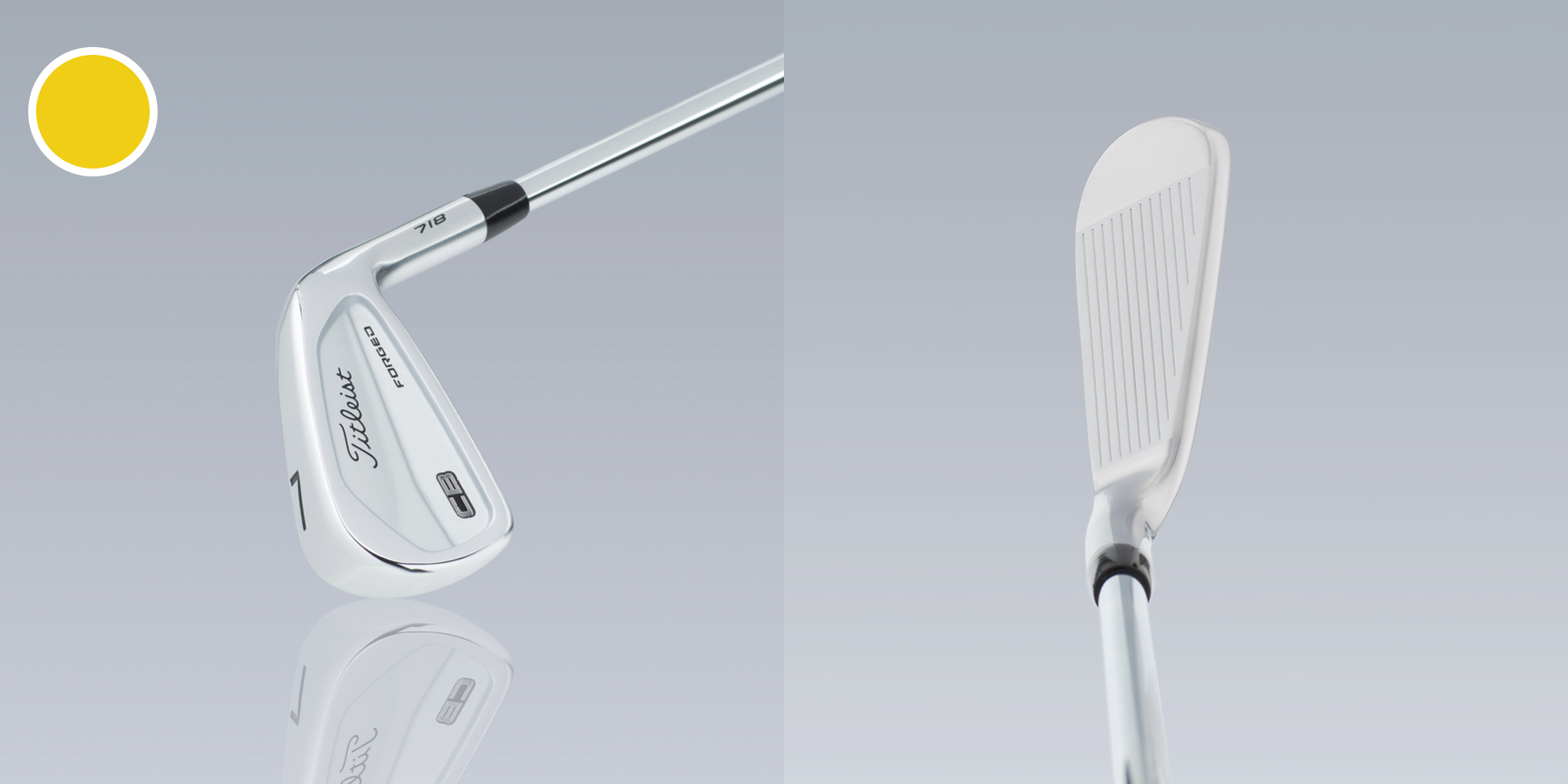
Verdict The CB is an example of Titleist taking its classic designs and making them more versatile. The centre of gravity is now closer to the centre of the face for more consistent ball speed. Tungsten weighting is used to improve stability on off-centre hits. The forged cavity-back uses a 17-4 stainless-steel face insert and a forged 1025 carbon-steel body through the 7-iron. The weight savings allow tungsten to be distributed to the heel and toe for forgiveness in the long and middle irons. The short irons are one-piece forgings.
Comments (L) Great iron for the better ball-striker. Fantastic turf interaction. (M) Enough size to inspire confidence and small enough to feel like you’ve got playability.
Bridgestone
Tour B X-CB
Performance ★★★★
Innovation ★★★½
Look/sound/feel ★★★★
Demand ★★
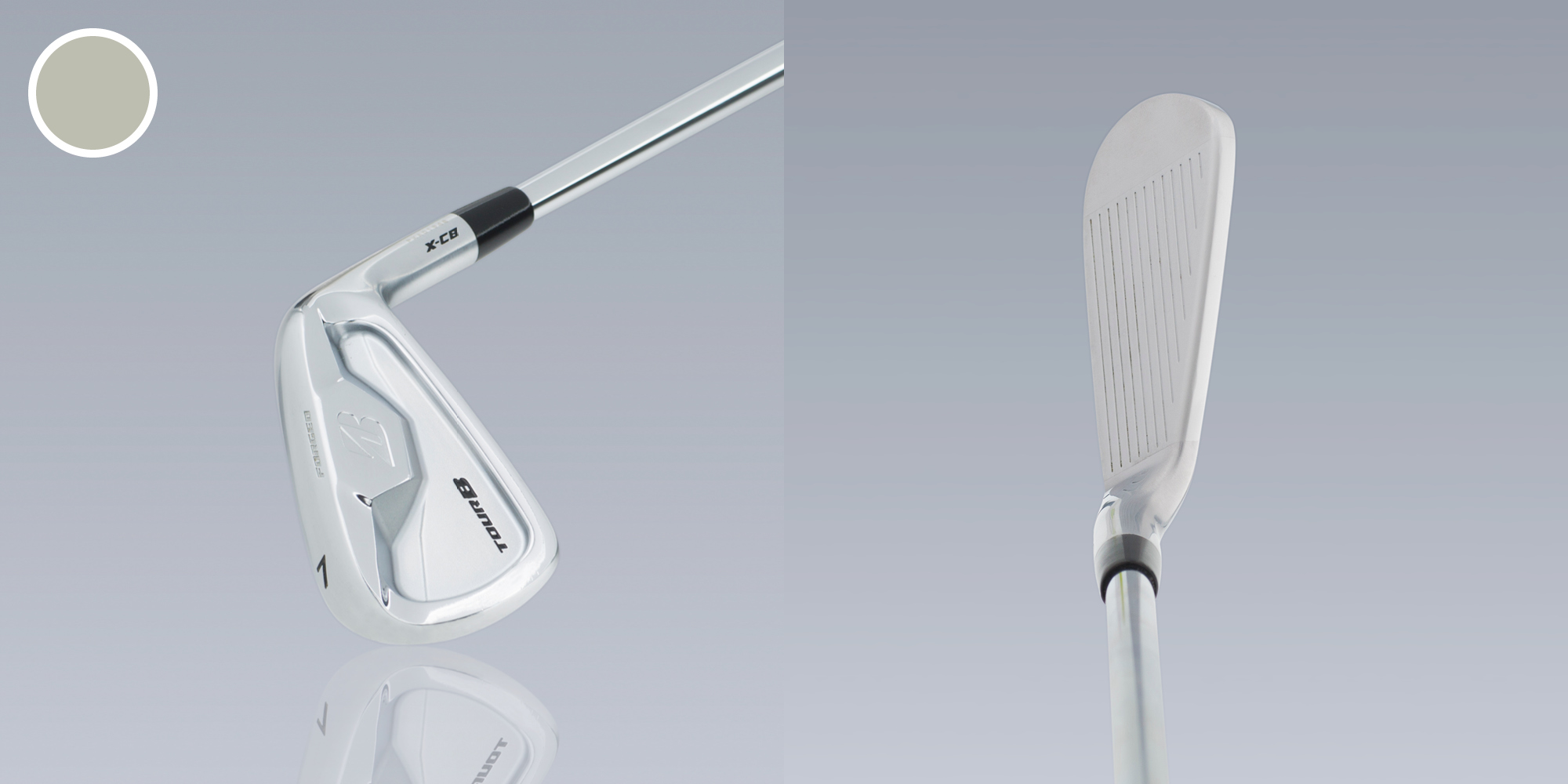
Verdict The Tour B X-CB is an effective mix of classic looks and contemporary technology. The irons, forged from 1020 carbon steel, use a weight pad behind the face to enhance feel. They also offer more aggressive lofts for the category (the 6-iron is 28 degrees, about 2 degrees stronger than traditional) and a wider sole for forgiveness through the turf. The 10 no-upcharge shaft upgrades are a terrific bonus to a player group that pays attention to such things.
Comments (L) These babies just jumped. I realised I could hit one less iron into a green. (M) The bevelling on the sole helps you. It’s like a rail on the sole. I could get down on them more and still hit it high. They did a great job blending the shape through the set.
Epon
AF-303
Performance ★★★★
Innovation ★★★½
Look/sound/feel ★★★★
Demand ★
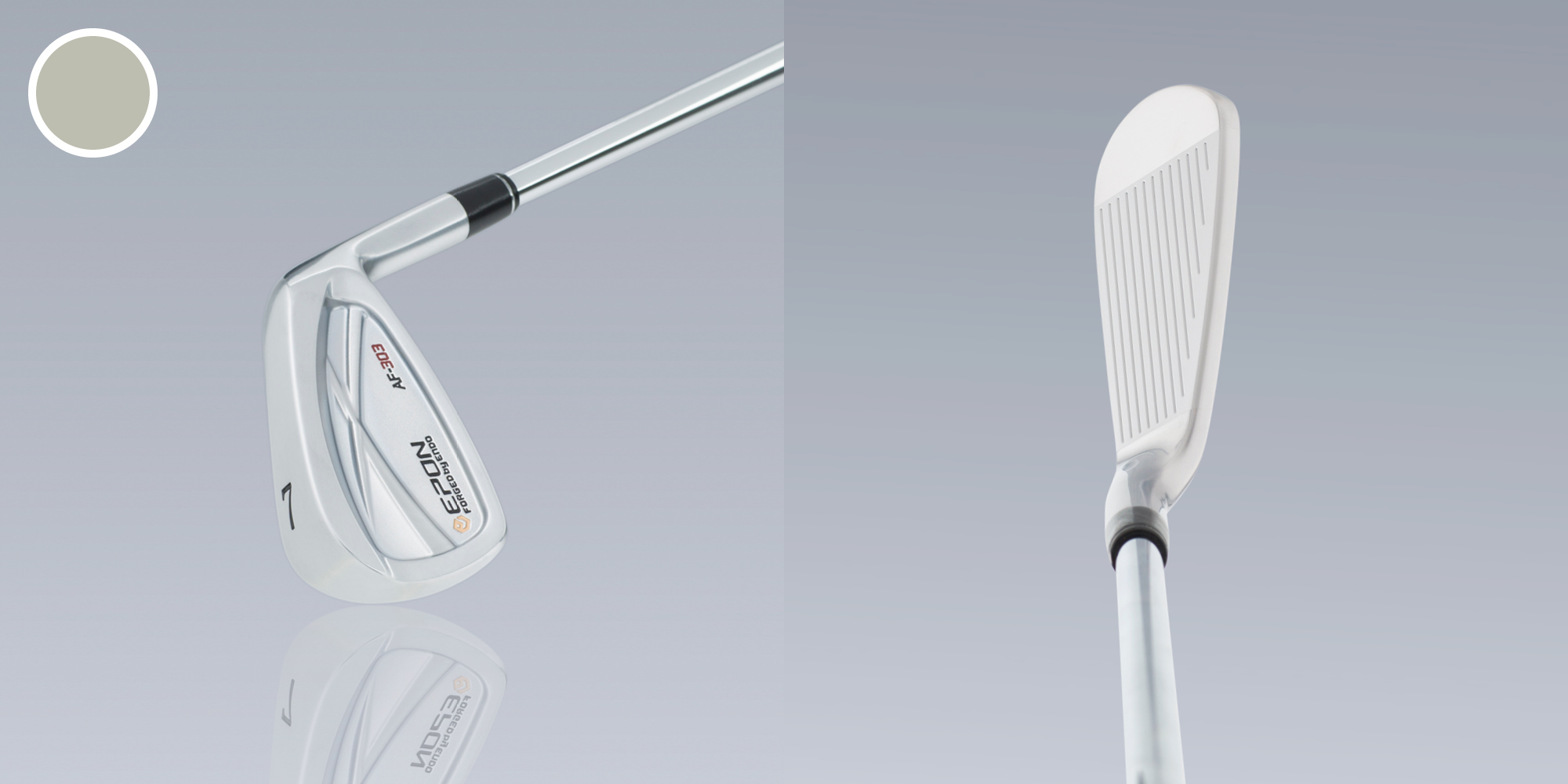
Verdict Low-handicap contrarians who revel in having others peek into their bag and wonder what they’re playing should consider these. Though the sole is wider than most players irons, the topline is consistent with clubs in this category. The quality of the forging also is unquestioned. Founded in 1977, Epon is a subsidiary of Endo, one of the world’s premier forging houses, meaning this is a cavity-back with plenty of playability combined with just enough weight low to get significant lift for those who need it.
Comments (L) Feels like they have a V8 – the engine, not the drink. Lots of power, easy to control and elevate. (M) My mis-hits seemed to go a little straighter. The head was stable through the ball.
Mizuno
JPX 900 Tour
Performance ★★★★
Innovation ★★★★
Look/sound/feel ★★★★
Demand ★★★½
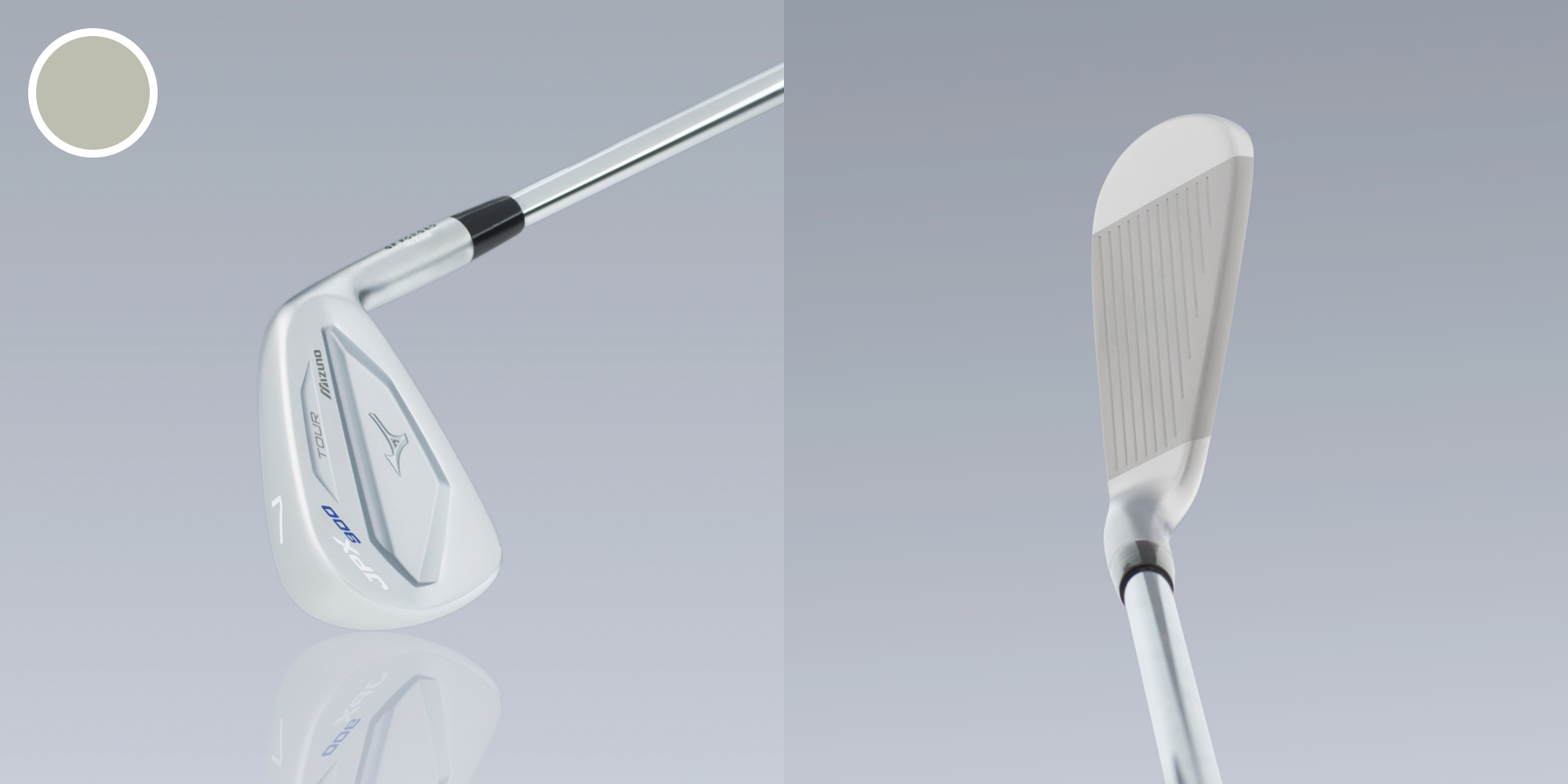
Verdict The grey-matte finish is un-Mizuno-like, but everything else is familiar. The company remains true to its better-player heritage by using the narrow sole design preferred by Mizuno staff players Luke Donald and Chris Wood. The clean, compact appearance at address strikes the right balance, and the one-piece, carbon-steel forging provides a syrupy feel. Forgiveness is not overlooked. Weight is pushed to the perimeter for added stability.
Comments (L) The look of the club at address is comforting. The topline has the right thickness. Not terrifying like some others in this category. (M) Turf interaction is effortless. Better than the rest. Just sliced through the grass.
Srixon
Z765
Performance ★★★★
Innovation ★★★★
Look/sound/feel ★★★½
Demand ★★★
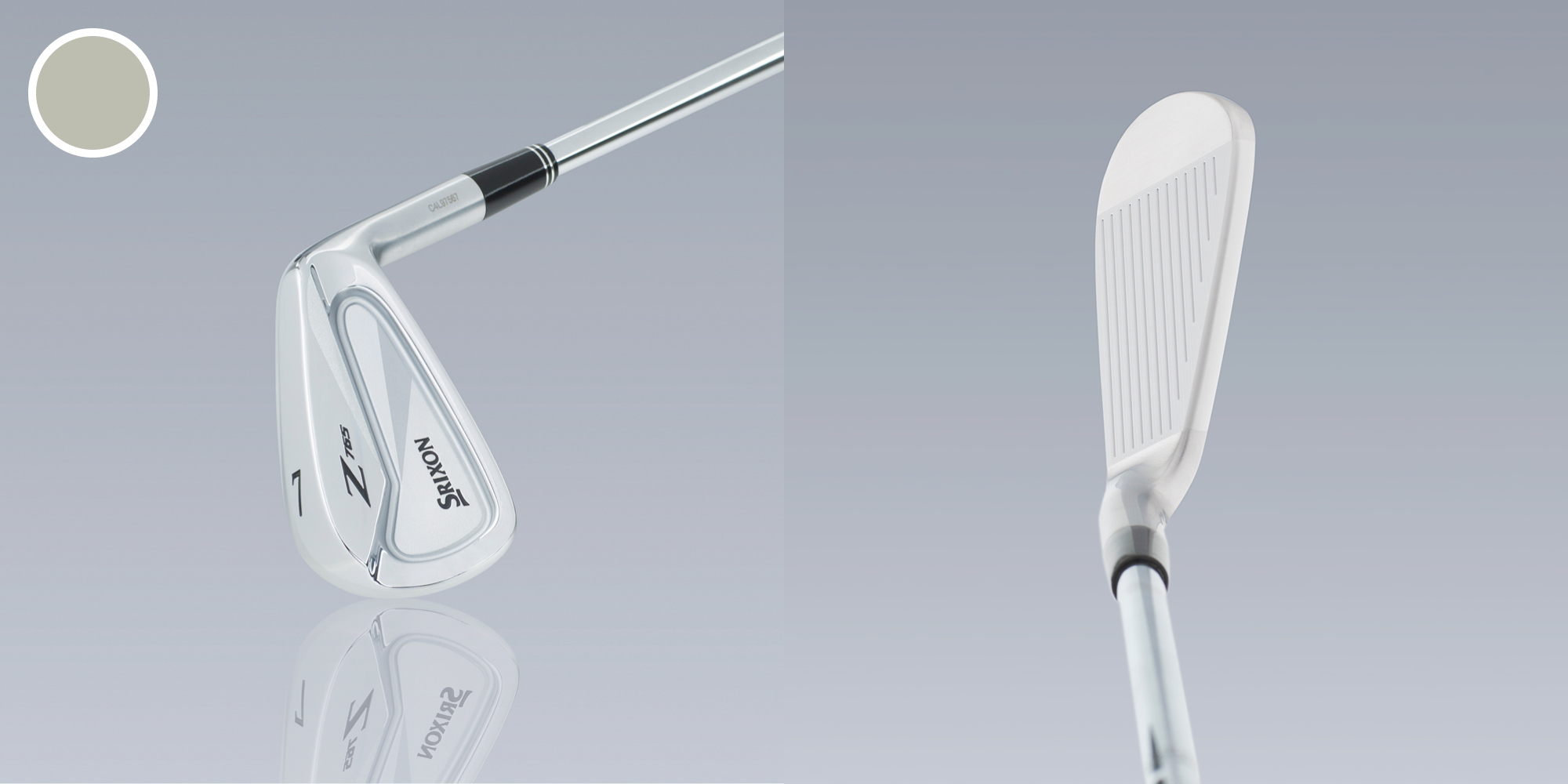
Verdict Trying to improve on the hard-to-quantify characteristic of feel could have been futile. But by combining a soft 1020 carbon-steel cavity-back head with a new heat treatment, the Z765 irons achieve the type of feel better players seek. For performance, Srixon focused on meaningful – if mostly visually undetectable – improvements like grooves that are larger than the club’s previous model. Also, the laser milling improves spin control. The V-shape sole has received an upgrade to reduce turf resistance at impact.
Comments (L) Because of the way the sole is bevelled, there’s no sticking the club in the turf. (L) Love the look. Simple and classy. There’s an excellent balance between the head and the shaft.
Wilson
FG Tour V6
Performance ★★★★
Innovation ★★★★
Look/sound/feel ★★★★
Demand ★★½
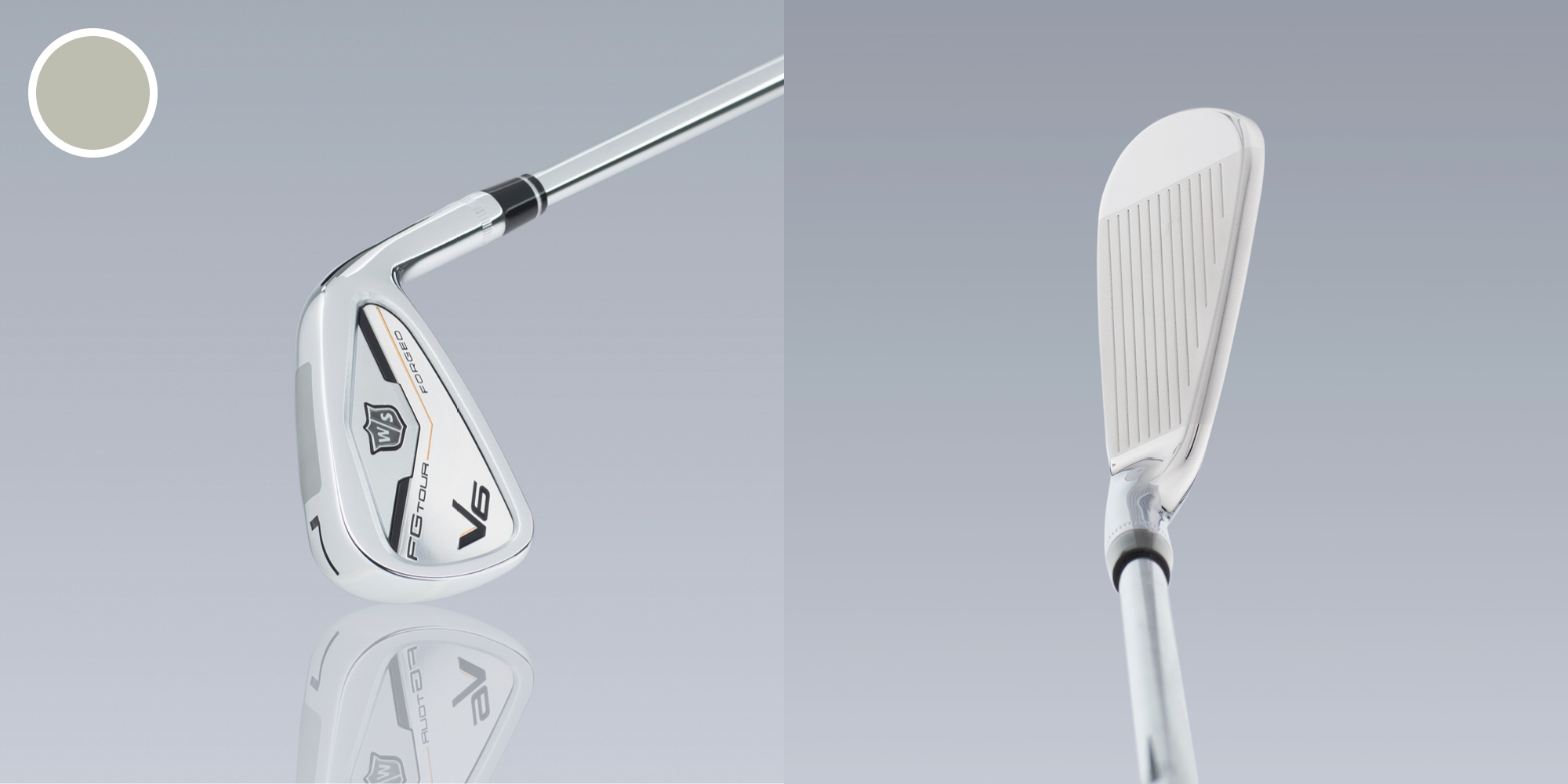
Verdict Today’s irons for better players focus on enhancing the seemingly incompatible traits of distance and precision. The FG Tour V6 balances these well, using multiple materials and loft-specific centre-of-gravity movement. The 3, 4 and 5-irons fuse tungsten into the low toe (12 grams) and low heel (eight grams) to improve off-centre-hit stability. On the 6 and 7-iron, all 20 grams of the tungsten is centred low in the sole, helping to increase launch. The 8-iron through gap wedge don’t use tungsten.
Comments (L) They’re exactly what I look for in terms of ball flight, workability and consistency. (M) It has that old-school look that is short from heel to toe and frames the ball well.
Players Distance Irons?
Our New Category Explained
It’s something we’ve asked ourselves for a few years: would it help our readers to differentiate between the traditional players iron – which emphasises feel and control – with a more modern version of the players iron that features distance technology?
As the latter gained momentum – it now represents 15 percent of the iron market, according to industry tracking firm Golf Datatech, thanks in part to the success of the Callaway Apex, one of the best early examples of such an iron – we decided it deserved its own category, one we call Players Distance irons. An iron in this category must satisfy a pair of simple, but strict criteria: it must be a players iron in shape and possess some distance-producing element.
Examples include a face design that wraps around the sole, topline or both; the use of a hollow construction; multiple materials; a special steel (or heat treatment) for the face; or an internal structure that promotes a flexible face. For golfers who might have lost a few metres over time playing traditional blades, these irons will get you that half a club back – maybe more – all without making you recoil when you put them down at address.
Worthy of its own category? You bet.
– M.J.

